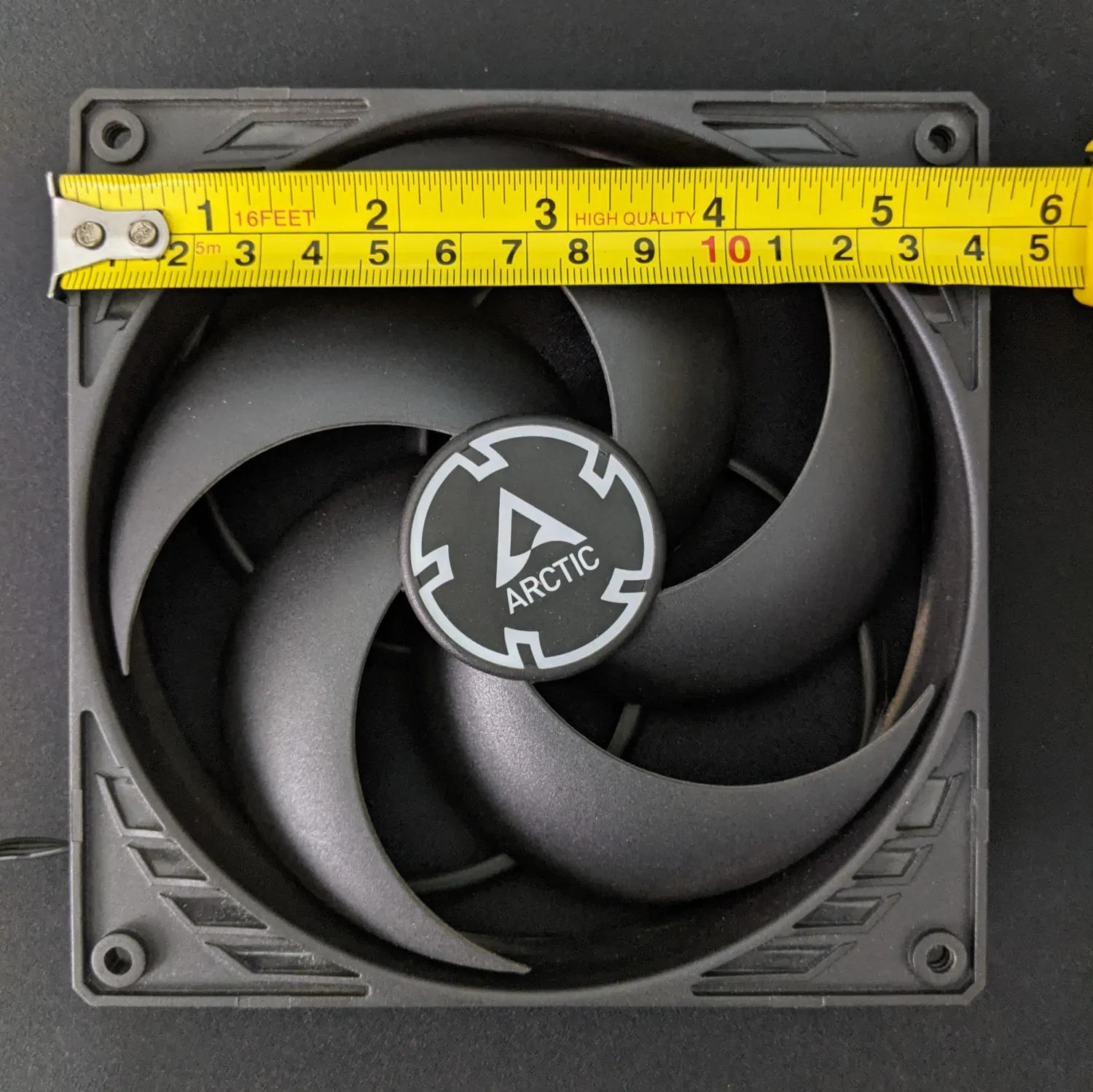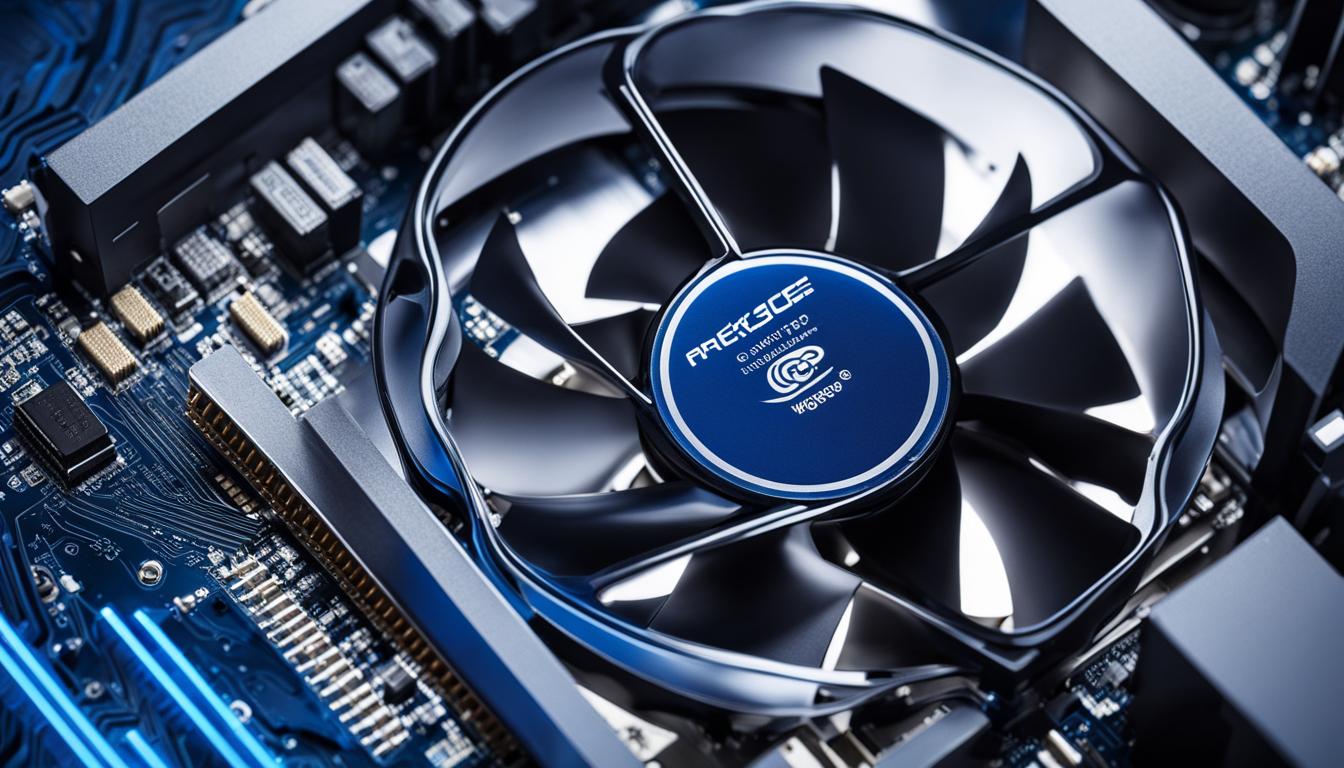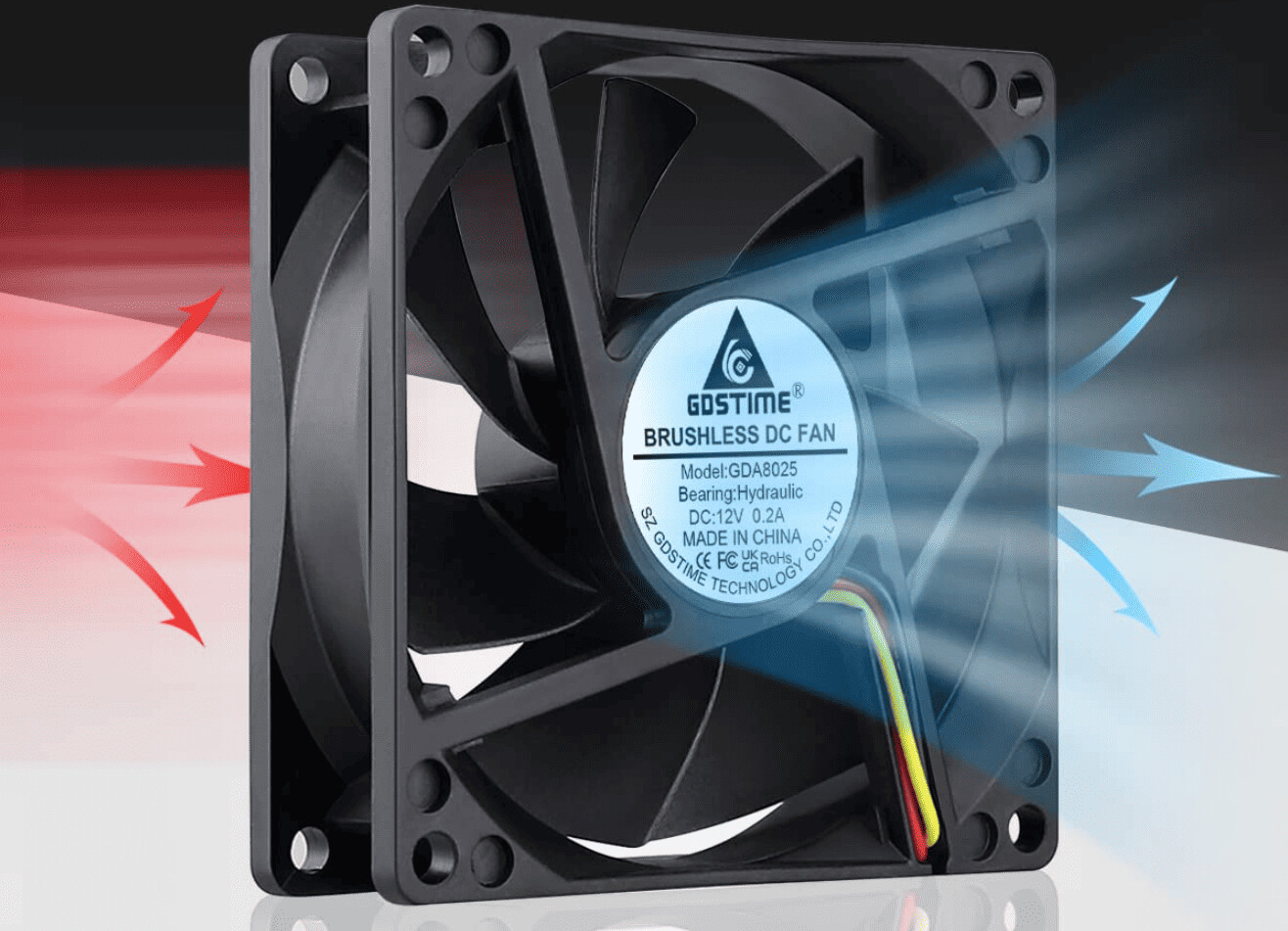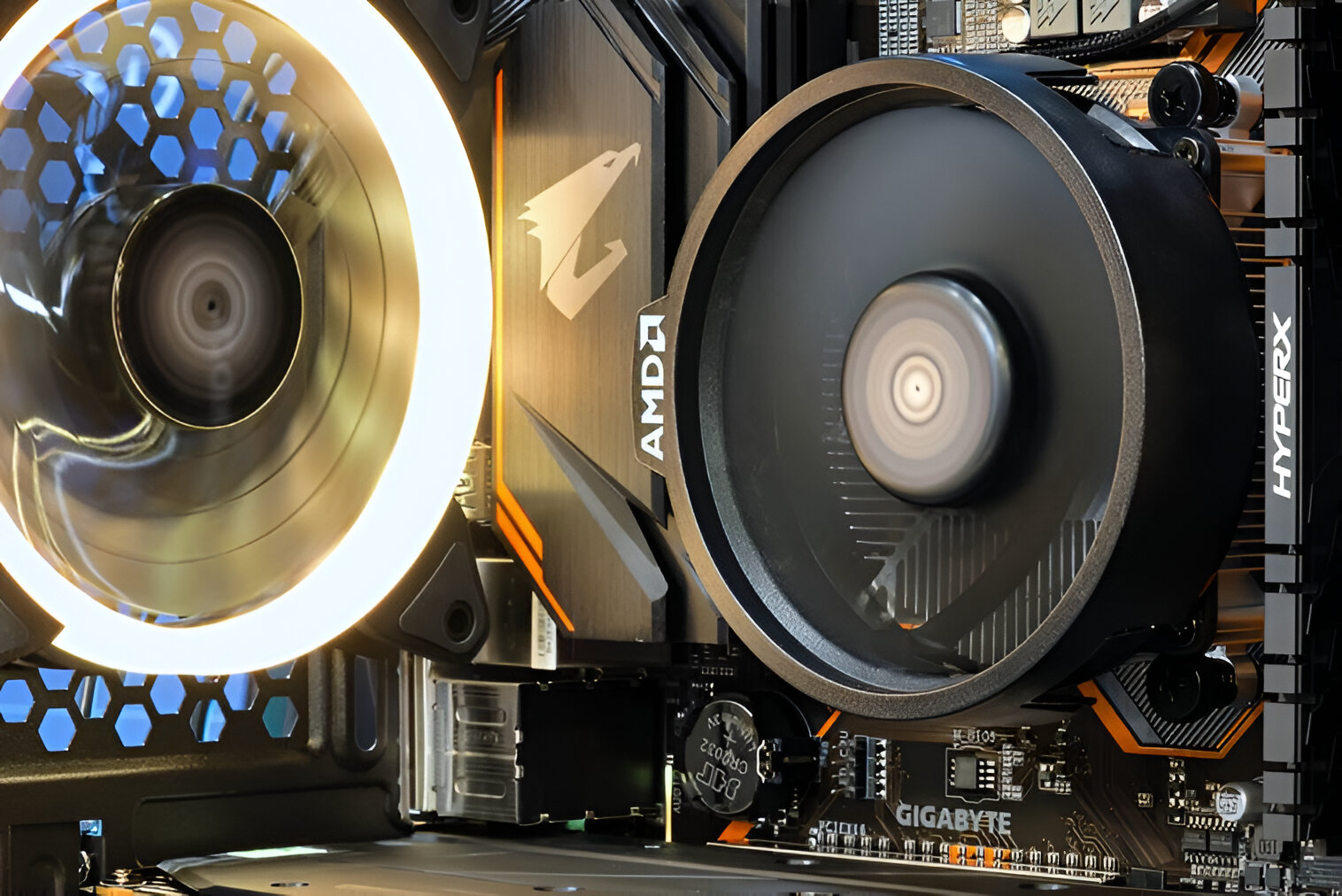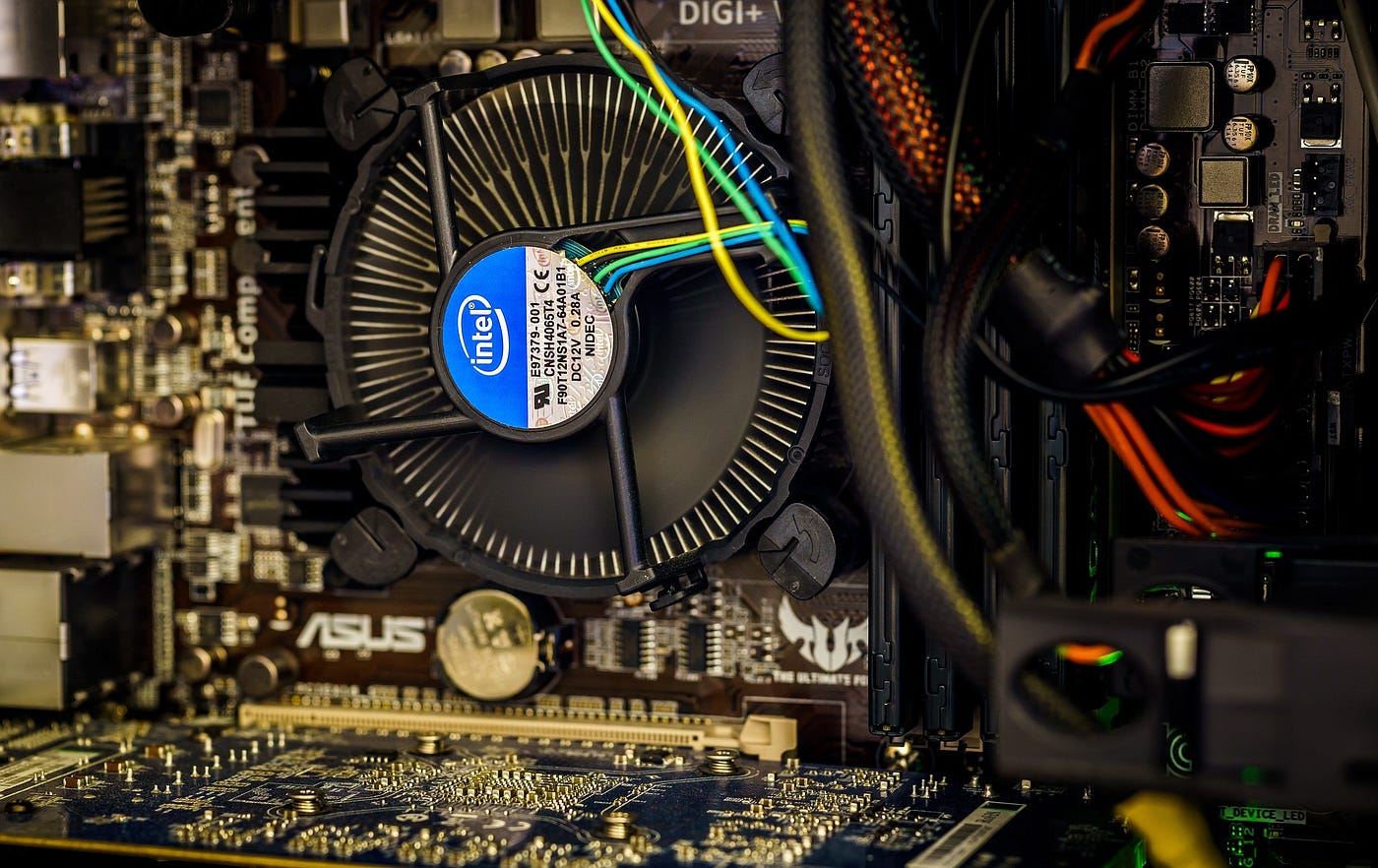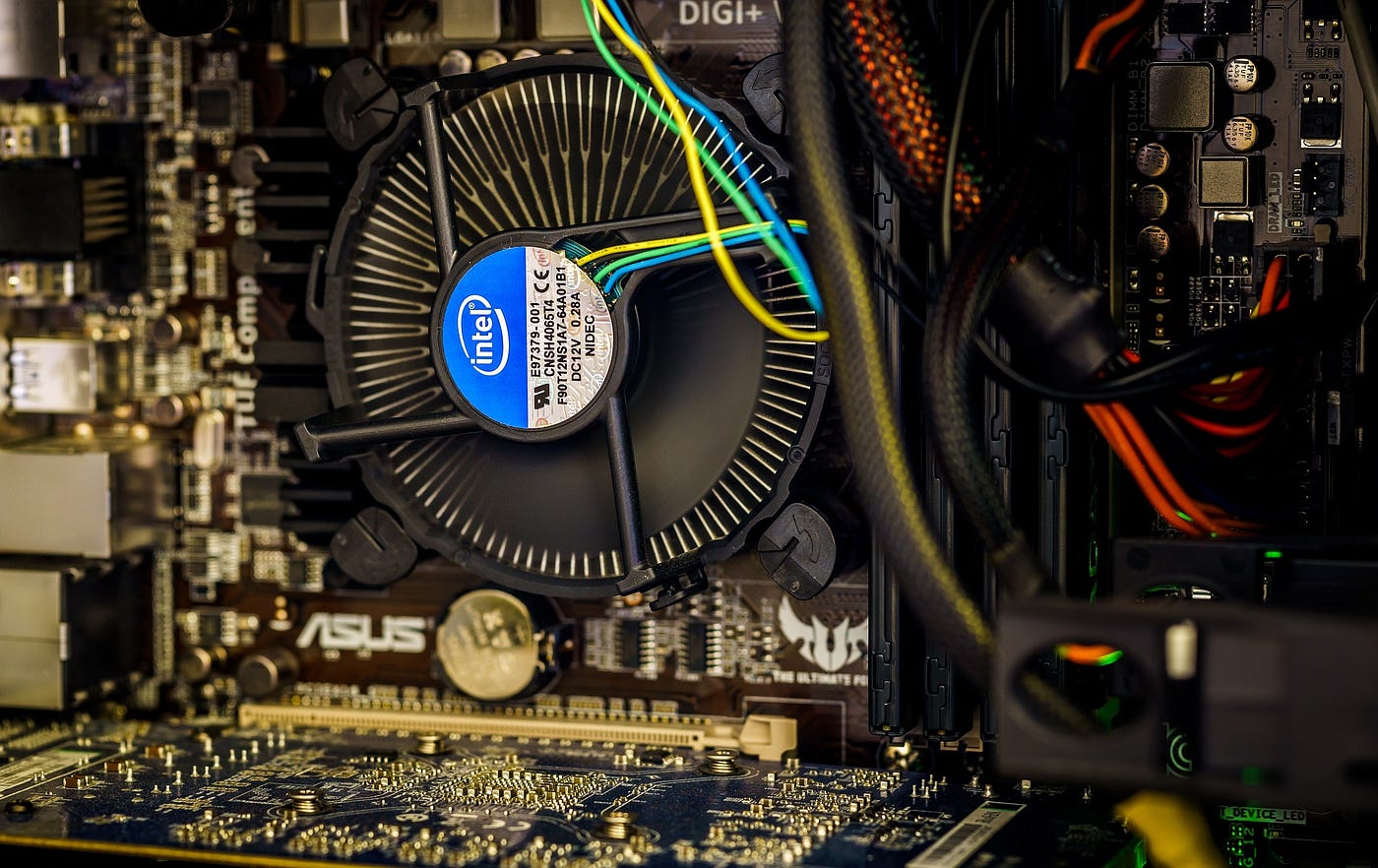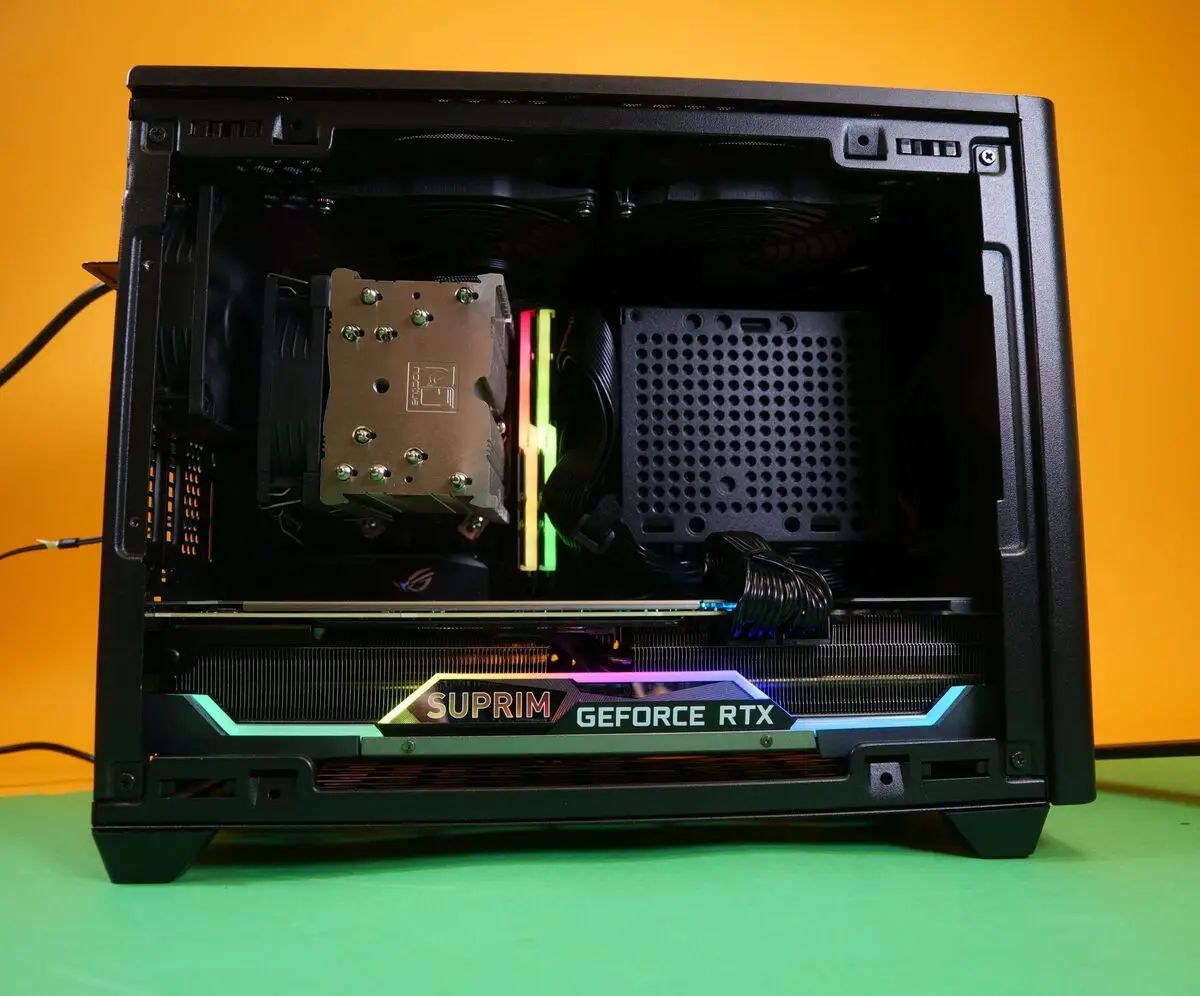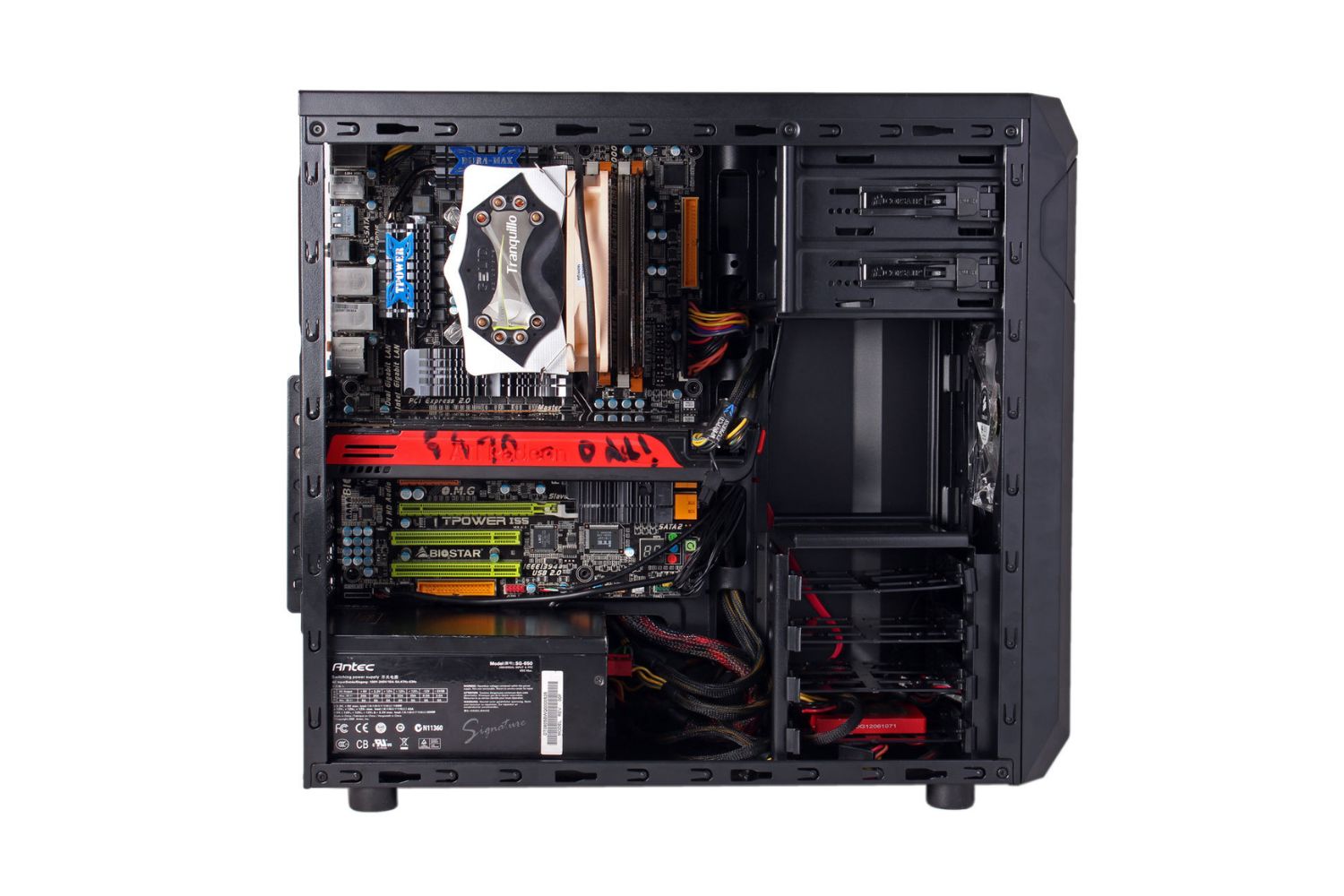Introduction
When it comes to ensuring optimal performance and longevity of your computer’s CPU, one crucial component to consider is the CPU fan. The CPU fan plays a vital role in dissipating heat generated by the processor, preventing damage from overheating. However, finding the correct size of the CPU fan can be a challenging task, especially for those new to computer hardware. This article will guide you through the process of measuring the CPU fan size accurately.
Understanding the size of your CPU fan is essential, as it determines compatibility with your computer case and ensures proper cooling. Using an improper size fan can result in inefficient cooling, increased noise levels, and potential damage to your CPU. To avoid these issues, it is crucial to measure the CPU fan size correctly before purchasing a replacement or upgrading to a more powerful cooling solution.
In this article, we will explore three different methods for measuring the CPU fan size. The first method involves directly measuring the fan itself, while the second method entails checking the manufacturer’s specifications. Lastly, we will discuss using software tools to determine the fan size.
By following these methods, you can confidently select the right CPU fan for your system, ensuring optimal cooling performance and prolonging the lifespan of your processor. So, let’s dive into the various techniques and tools required to measure the CPU fan size accurately.
Why is it important to measure the CPU fan size?
Measuring the CPU fan size is crucial when it comes to maintaining the overall health and performance of your computer. Here are a few reasons why it is important to accurately determine the CPU fan size:
-
Compatibility with the computer case: The CPU fan must fit properly within the computer case. If the fan is too large, it might not fit, obstructing other components or causing damage. Conversely, if the fan is too small, it may not provide adequate cooling, leading to higher temperatures and potential overheating.
-
Efficient cooling: The CPU fan’s primary purpose is to keep the processor cool by dissipating heat generated during operation. If the fan size is incorrect, it may not be able to effectively cool the CPU, resulting in higher temperatures. Over time, sustained high temperatures can significantly impact the CPU’s performance and lifespan.
-
Noise levels: Incorrectly sized CPU fans may generate excessive noise due to the fan spinning at high speeds to compensate for inadequate cooling. This can lead to a noisy and disruptive computing experience.
-
Preventing damage: Inadequate cooling caused by a wrongly sized CPU fan can result in severe damage to the CPU and other vital components. Overheating can cause system crashes, instability, and even permanent damage to the processor, leading to costly repairs or replacements.
In summary, measuring the CPU fan size is essential for compatibility, efficient cooling, lower noise levels, and the prevention of potentially damaging the CPU and other components. By ensuring the fan is the correct size, you can optimize the performance and lifespan of your computer system while enjoying a reliable and quieter computing experience.
Tools required to measure CPU fan size
To measure the size of your CPU fan accurately, you will need a few tools to assist you in the process. These tools can vary depending on the measurement method you choose. Here are the essential tools you may need:
-
Tape measure or ruler: A tape measure or ruler is commonly used to measure the physical dimensions of the CPU fan. It allows you to measure the diameter of the fan blades and determine the overall size of the fan.
-
Calipers: Calipers are useful for measuring precise dimensions. They allow you to measure the thickness of the fan blades and get accurate measurements for a more precise fit.
-
Manufacturers specifications: Checking the manufacturer’s specifications is an important tool for identifying the size of the CPU fan. This information is usually available on the product’s packaging, the manufacturer’s website, or in the user manual. It provides specific details about the dimensions of the fan, such as the diameter and the height, allowing you to ensure compatibility.
-
Software tools: In some cases, you can utilize software tools to determine the size of the CPU fan. These tools extract information from the computer’s hardware and provide detailed specifications about the installed fan, including its dimensions.
Having these tools on hand will enable you to measure the CPU fan size accurately, whether you choose to measure it physically, consult the manufacturer’s specifications, or use software tools. Remember to use the appropriate tool depending on the method you select. With the right tools and techniques, you’ll be well-equipped to measure the CPU fan size and make informed decisions when it comes to maintaining or upgrading your computer’s cooling system.
Method 1: Measuring the fan itself
One way to determine the size of your CPU fan is by directly measuring the fan itself. This method requires a tape measure, ruler, or calipers to accurately measure the dimensions of the fan. Here’s a step-by-step guide to measuring the fan size:
-
Power off and unplug your computer: Before performing any measurements or working on the computer’s internal components, ensure that the computer is powered off and unplugged. Safety should always be a priority.
-
Open the computer case: Depending on your computer model, you might need to unscrew the side panel or remove any latches to access the CPU fan. Refer to your computer’s user manual or online resources for guidance.
-
Locate the CPU fan: The CPU fan is typically located on the motherboard, near the CPU socket. Identify the fan by its distinctive appearance and the presence of fan blades.
-
Measure the diameter: Using a tape measure, ruler, or calipers, measure the diameter of the fan. This can be done by placing the measuring tool at one end of the fan and extending it to the opposite end, passing through the center. Note down the measurement in millimeters (mm).
-
Measure the thickness: If desired, you can also measure the thickness or height of the fan blades using calipers. Place the calipers perpendicular to the fan and gently close them until they make contact with the blades. Read the measurement and record it in millimeters (mm).
-
Record the measurements: Once you have obtained the measurements for the diameter and optionally, the thickness, record them. These measurements represent the size of your CPU fan.
-
Close the computer case: After obtaining the measurements, safely close the computer case, ensuring that all screws or latches are securely fastened.
By following these steps and accurately measuring the dimensions of your CPU fan, you can determine its size for compatibility and selecting an appropriate replacement or upgrade. This physical measurement method provides precise information about the fan’s size, ensuring a proper fit within your computer system.
Method 2: Checking the manufacturer’s specifications
Another method to determine the size of your CPU fan is by checking the manufacturer’s specifications. This method is convenient if you have access to the packaging, user manual, or the manufacturer’s website. Here’s how you can find the fan size using this method:
-
Identify the make and model: Determine the make and model of your CPU fan. This information is usually printed on the fan itself or can be found in the computer’s documentation.
-
Check the packaging or user manual: If you have the original packaging or the user manual, refer to the specifications section. Look for details about the fan, including the dimensions such as the diameter and height. Record these measurements for reference.
-
Visit the manufacturer’s website: If you don’t have the packaging or user manual, you can visit the manufacturer’s website. Look for the support or product page of your CPU fan model. Navigate to the specifications section or search for the fan’s dimensions. The manufacturer usually provides detailed information about the fan size.
-
Record the measurements: Once you have located the fan size information, record the measurements. Note the diameter and any other relevant dimensions. These measurements will help you determine the size of your CPU fan.
By checking the manufacturer’s specifications, you can easily find the size of your CPU fan without the need for physical measurements. This method provides accurate information directly from the manufacturer, ensuring compatibility and helping you make informed decisions when replacing or upgrading the fan.
Method 3: Using software tools to determine fan size
In addition to physically measuring the CPU fan or checking the manufacturer’s specifications, you can also use software tools to determine the fan size. These tools gather information about your computer’s hardware and provide detailed specifications, including the fan size. Here’s how you can use software tools to determine the CPU fan size:
-
Research software tools: Look for software tools specifically designed for hardware monitoring or system information. Popular options include CPU-Z, HWMonitor, and Open Hardware Monitor. These tools are free to download and use.
-
Download and install the software: Once you have identified a suitable software tool, download it from the official website and follow the installation instructions. Ensure that you download the tool from a reputable source to avoid any potential security risks.
-
Launch the software: After the installation is complete, launch the software tool. It will automatically scan your computer’s hardware and display detailed information.
-
Find the fan information: Look for the section that provides information about the CPU fan. The software will typically display details such as fan speed, temperature, and size.
-
Note down the fan size: Take note of the fan size information provided by the software. It will often include the diameter or dimensions of the fan.
-
Combine with other methods: Using software tools to determine the fan size can be a convenient option, especially if you’re unable to physically measure the fan or find the manufacturer’s specifications. However, it’s always a good idea to cross-reference the information obtained from software tools with other methods to ensure accuracy and reliability.
By utilizing software tools to determine the CPU fan size, you can easily obtain detailed specifications without the need for manual measurements or consulting manufacturer documentation. This method provides a quick and convenient way to find the fan size, ensuring compatibility when replacing or upgrading the CPU fan.
Tips for measuring CPU fan size accurately
To ensure that you measure the CPU fan size accurately, consider the following tips and suggestions:
-
Use precise measuring tools: When measuring the fan dimensions, use a tape measure, ruler, or calipers that provide accurate measurements. This will help you avoid any discrepancies and ensure precise sizing.
-
Measure multiple times: To minimize the chances of error, measure the fan size multiple times. Take the average of the measurements to obtain a more accurate value.
-
Take note of the units: Ensure that you are consistent with the units of measurement. Whether you use millimeters (mm) or inches (in), stick to the same unit throughout the measurement process.
-
Measure the outer dimensions: When measuring the diameter, measure the outer edge of the fan blades. Avoid measuring the central hub or motor as it may provide inaccurate results.
-
Consider thickness: If you are looking to replace a CPU fan that has specific thickness requirements, ensure you measure the thickness accurately using calipers. This will help you find a suitable replacement with the correct thickness.
-
Refer to the manufacturer’s recommendations: If the manufacturer provides specific guidelines for measuring the fan size, follow those instructions for the most accurate results.
-
Double-check with other methods: To validate the accuracy of your measurements, cross-reference the size obtained through physical measurements with the manufacturer’s specifications or software tools. This additional step will help ensure that the measurements are correct.
-
Consult expert advice: If you have any doubts or uncertainties about measuring the CPU fan size, seek guidance from experts or consult online communities and forums dedicated to computer hardware. They can provide valuable insights and assistance.
By following these tips, you can increase the accuracy of your CPU fan size measurements and ensure compatibility when selecting a replacement or upgrading your cooling system. It’s important to measure correctly to avoid any potential issues related to fit, cooling capacity, and overall system performance.
Conclusion
Measuring the CPU fan size accurately is essential for maintaining optimal cooling and overall performance of your computer system. By following the methods outlined in this article, you can determine the size of your CPU fan with confidence. Whether you choose to measure the fan physically, consult the manufacturer’s specifications, or use software tools, each method provides valuable insights into the dimensions of the fan.
Ensuring the compatibility of the CPU fan with your computer case, achieving efficient cooling, and reducing noise levels are all benefits of accurately measuring the fan size. Avoiding damage to your CPU and other components due to improper cooling is also a critical consideration.
Remember to utilize precise measuring tools, take multiple measurements for accuracy, and record the dimensions in consistent units. Consider cross-referencing the information obtained from different methods to ensure reliability.
Ultimately, by understanding the importance of measuring the CPU fan size and having the necessary tools and techniques at your disposal, you can make informed decisions when replacing or upgrading your CPU fan. This ensures compatibility, optimal thermal performance, and extends the lifespan of your computer system. So, embark on the journey of measuring your CPU fan size accurately and enjoy a well-cooled and efficient computing experience.







